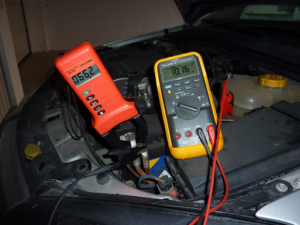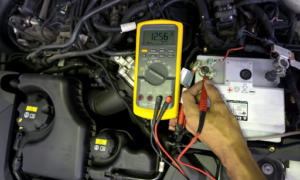
Navigating through the intricacies of a golf cart charging system can often seem daunting. However, with a detailed understanding and the right approach, troubleshooting becomes less of a chore and more of a simple, systematic process. This extensive guide is designed to walk you through everything you need to know to diagnose, troubleshoot, and maintain your golf cart’s charging system effectively, ensuring your golf cart is always ready for the next ride.
Golf carts have become indispensable in various settings, from golf courses to gated communities. Yet, like any vehicle, they come with their share of maintenance needs, especially regarding their charging systems. Troubleshooting these systems is a skill that saves time, energy, and money, preventing minor issues from becoming major inconveniences.
Understanding the Basics of Golf Cart Charging Systems
Before diving into troubleshooting, it’s crucial to grasp the fundamentals of how
golf cart charging systems operate. These systems are designed to recharge the golf cart’s batteries after use, ensuring it’s ready for the next outing. The type of battery in your cart—be it Lead-Acid or Lithium—plays a significant role in the charging process and maintenance requirements. Regular maintenance is not just beneficial; it’s essential for optimal performance and longevity of your golf cart’s batteries.
Preliminary Steps Before Troubleshooting
Safety first: always follow necessary safety measures before starting the troubleshooting process, including disconnecting the battery. Gather the necessary tools and equipment for troubleshooting and prepare your golf cart for a thorough examination. These preparatory steps ensure a smooth and safe troubleshooting process.
Common Signs of Charging System Failure
Identifying the symptoms of a charging system failure is the first step in troubleshooting. These symptoms can range from the golf cart not holding a charge to slower than usual acceleration. Understanding the difference between battery issues and charger issues is crucial in pinpointing the problem.
How to Diagnose Golf Cart Battery Problems

Testing Battery Voltage and State of Charge
Using a multimeter to test battery voltage is a straightforward process that provides valuable insights into the health of your golf cart’s batteries. This section offers a step-by-step guide on how to perform these tests and interpret the results.
Inspecting Batteries for Physical Damage
Physical inspection of the batteries can reveal issues such as bulging, leaks, or corrosion. This checklist will help you identify these signs of damage and determine the next steps.
Assessing Battery Age and Replacement Time
Batteries have a finite lifespan. This part of the guide provides guidelines on battery lifespan and when to consider a replacement, ensuring your golf cart operates efficiently.
Troubleshooting the Golf Cart Charger
Verifying Charger Functionality
A functioning charger is pivotal for a fully operational golf cart. Learn how to test if your charger is delivering the correct output and what to do if it’s not.
Inspecting Charger Connections and Cables
Connections and cables are often the culprits behind charging issues. This section includes a bullet list detailing common issues and fixes, ensuring your charger is in top condition.
Understanding Charger Error Codes
Charger error codes can be perplexing. This list deciphers common error codes, guiding you through what they mean and how to address them.
How to Test and Maintain the Charging System

Checking the Electrical Connections
Regular inspection and cleaning of battery terminals and connections are fundamental to maintaining the charging system’s efficiency. This guide provides a detailed walkthrough of the process.
Testing the Golf Cart’s Alternator or Generator
The alternator or generator is key to the charging process. Learn how to test these components for proper function and what to do if there are issues.
The Role of the Voltage Regulator and How to Test It
The voltage regulator ensures your batteries charge correctly. Understanding its function and testing procedures is vital for troubleshooting charging problems.
Advanced Troubleshooting Techniques
Using a Load Tester on Batteries
A load test is an effective way to assess battery performance under stress. This section offers guidelines on performing a load test and interpreting the results, providing a deeper insight into your batteries’ health.
Diagnosing Electrical Issues in the Charging Circuit
Electrical issues within the charging circuit can be challenging to identify. This part of the guide offers tips for diagnosing and fixing these issues, ensuring the smooth operation of your golf cart’s charging system.
Preventive Maintenance Tips for Golf Cart Charging Systems

Regular maintenance is key to preventing charging system failures. This bullet list outlines essential tasks to keep your system running smoothly and recommendations for extending battery life and improving performance.
When to Seek Professional Help
Sometimes, DIY troubleshooting reaches its limits. Recognizing when to consult with a golf cart mechanic is crucial. This section provides indications for professional intervention and tips on choosing a reputable service provider.
FAQ: Common Questions About Golf Cart Charging Systems
Addressing frequently asked questions provides clarity on common concerns, such as why a golf cart might not charge even with the charger plugged in, signs that batteries need replacement, the feasibility of using a car charger, and expected battery lifespan.
Conclusion
Troubleshooting and maintaining a golf cart charging system need not be daunting. With this comprehensive guide, you’re equipped with the knowledge and steps to ensure your golf cart’s charging system operates at its best. Regular maintenance and a systematic approach to troubleshooting can greatly extend the life and reliability of your golf cart, ensuring it’s always ready for the green or wherever your travels take you. Remember, the key to longevity and reliability lies in regular maintenance and a proactive approach to troubleshooting.









More Stories
Essential Features to Look for in ADAS Calibration Systems
Your Guide to Filing a Car Accident Claim
Steps to Take Immediately After a Car Accident